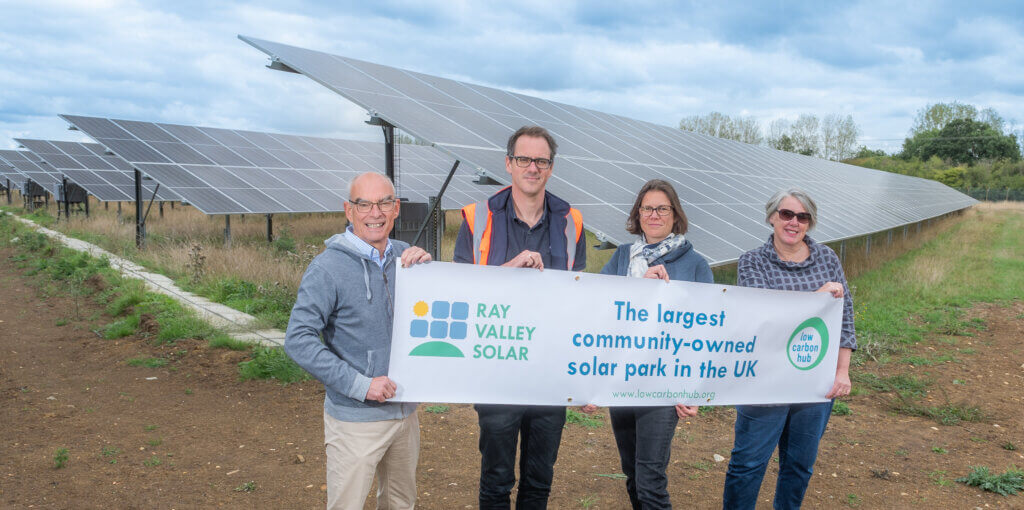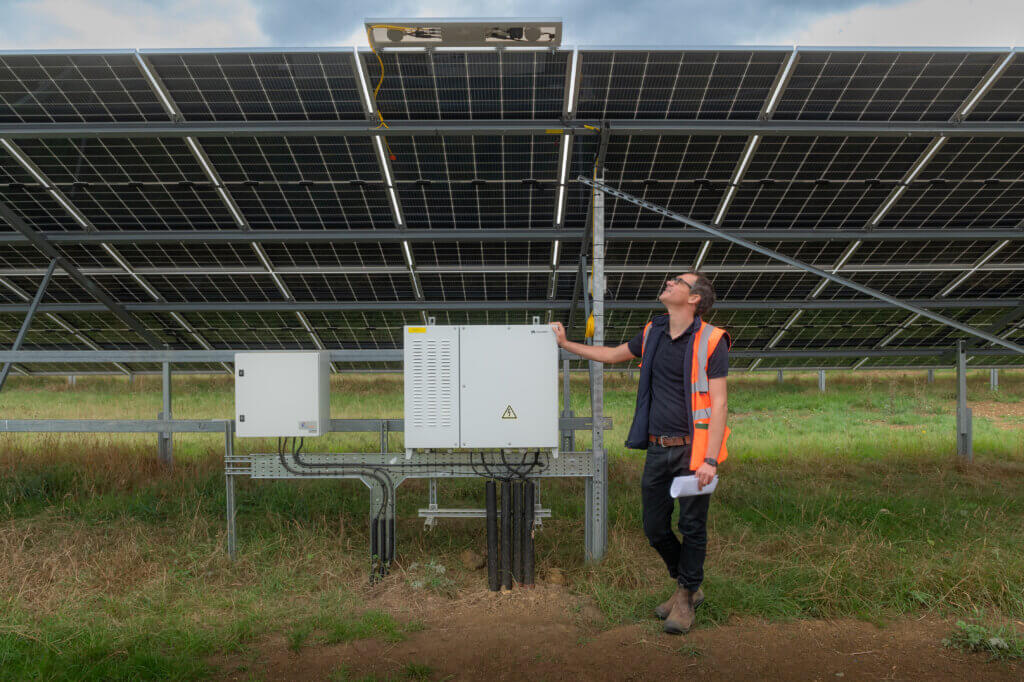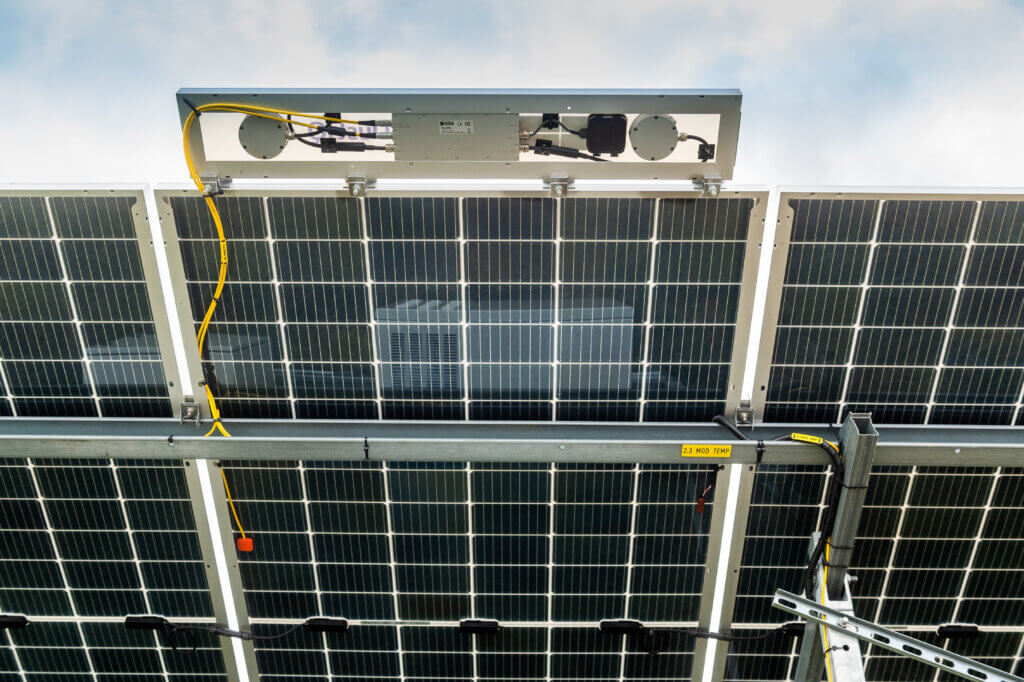Ray Valley Solar – a shining example of solar innovation
Bifacial solar panels are an innovation in renewable energy technology that allows sunlight to be captured not only from the front, but also from the rear sides of the panels, maximising energy production and efficiency.
Low Carbon Hub made the decision to install bifacial solar panels at our first ever ground mount solar park at Ray Valley Solar. Whilst in its early days as a project – we’ve been generating since July 2022 – we are seeing firsthand the benefits of that decision with an increase in efficiency. We’ve found that we gained an extra 10% energy production across the year from using bi-facial panels. With these panels really shining in the spring time where we are seeing the highest gains.
And more clean energy production means more community benefit funds. Ray Valley Solar is set to generate around £13 million in community benefit over the project lifetime. More funding means more support for action to cut carbon emissions and takes us further in our aim to support communities and tackle climate change.

How bifacial panels are different
Traditional solar panels absorb sunlight from just oneside, the side facing the sun. Bifacial solar panels, on the other hand, can capture sunlight from both the front and rear sides, thanks to their transparent back sheet. This enables them to use sunlight reflected from the ground and surrounding surfaces, increasing their energy yield.

Increased energy production
Because they harvest reflected light, bifacial panels are more efficient than traditional panels, and can generate more electricity.
As they rely on diffuse solar radiation, they are also more efficient in cloudy conditions and for longer periods of the day when there is no direct sunlight but there is diffuse sunlight.
This means that they work more efficiently outside of just the summer season.
We can attest to this at our community-owned ground mount solar project, Ray Valley Solar, where we’ve noticed that we gained 10% extra energy production across the year from using bi-facial panels.
Versatility in installation
Bifacial solar panels offer greater flexibility in installation compared to their monofacial counterparts. They can be mounted on various surfaces, including the ground, rooftops, and even vertically, allowing for more creative and space-efficient designs. This adaptability makes them suitable for a wide range of applications, from large-scale solar farms to smaller installations.
Environmental impact
The increased energy production of bifacial solar panels means that fewer panels are required to achieve the same power output. This is good news as it means you can reduce the manufacturing and transport-related carbon footprint of the technology and your renewable energy project overall.
Challenges and the future
While bifacial solar panels offer numerous benefits, challenges do exist. They are more expensive than traditional monofacial panels to install. Although, it is predicted that the cost will come down as production of these panels increases.
They are becoming the go-to panel for community energy projects, such as ours at Ray Valley Solar.
Conclusion
As the demand for clean and renewable energy solutions continues to grow, bifacial solar panels are emerging as a promising technology that can enhance the efficiency of solar generation.

To find out more about our ground mount solar project, see the Ray Valley Solar case study page.
